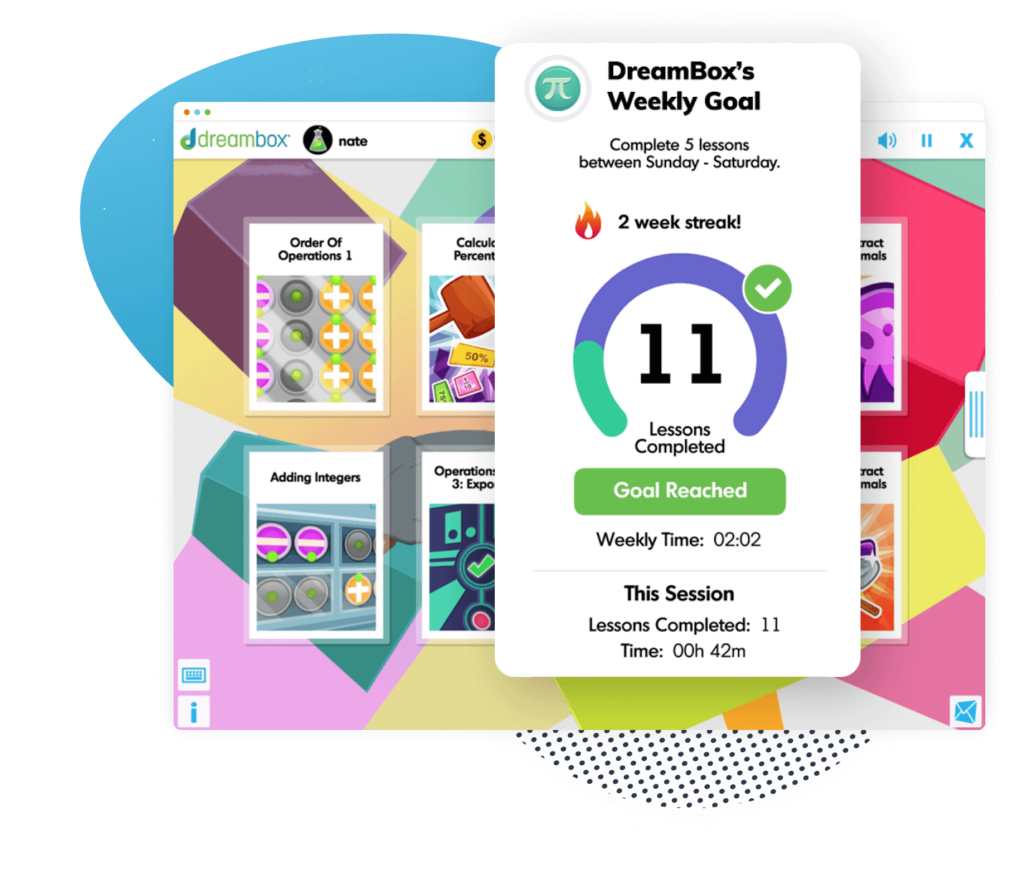First Day of 2nd Grade
Prepare your child—and yourself—for the first day of 2nd grade with these simple tips and techniques.

Author
Tess Loucka
Published:
August 2025
Key takeaways
- • Children going into 2nd grade are expected to be responsible and independent.
- • Set summer habits and routines that align with what your child will be doing during the school year to prepare them for the first day.
- • Encourage independence with household chores and daily tasks that your child can do on their own.
So, the first day of 2nd grade is approaching. *gulp*
Most parents look at the first day of going back to school with anxiety, whether that’s because of tantrums, hard goodbyes, or simply having to face the unknown.
If you don’t know what to expect on the first day of 2nd grade, taking your child to school can seem nerve-wracking!
So, let’s go over exactly what to expect on that first day and what steps you can take to prepare yourself and your child for back-to-school season.
What Parents Should Know About the First Day of 2nd Grade
You may be happy to hear that the first day of school is often easier for 2nd graders than it is for 1st graders. That’s because, unless kids are going to a new school, they will be used to the school environment.
They may have even developed strong friendships with classmates whom they can see again on the first day back. They may be more comfortable finding their way around the school building as well, which can make life easier for parents dropping off kids.
Additionally, they will have developed connections with teachers and school staff, meaning they will be more comfortable asking for help when needed, either to find the right classroom or navigate new schedules.
But, while navigating school does get easier, things also change quite a bit in 2nd grade!
There are new academic and social expectations, such as more independence and critical thinking skills.
Class structures may change too, with students often leaving their main classroom to go to science labs, cafeterias, and any other specialized school rooms.
So, the first day calls for confidence and an excitement for change, which parents can impart in their kids by staying positive and using phrases like, “The first day back is going to be so exciting,” or “I can’t wait for you to get back to school and see all your friends again.”
- Make the first day of school seem exciting for your child by staying positive.
Let’s talk about simple techniques and strategies you can use to start your child off on the right foot!
How to Emotionally Prepare Your Child
Children may view the first day of 2nd grade with nervousness and even fear. The best way to ease those negative feelings is to talk them out.
Talk to your child about school. Talk about what makes them excited about going back to school. Talk about what worries them.
And, when relevant, share your own school experiences! Knowing that you’ve been through the same thing as them—and survived—can help them feel both understood and less nervous about that first day back.
- Talk through your child’s feelings to boost their confidence before the big day.
You can get your child ready for the first day of 2nd grade with a fun countdown. Hang up a calendar or chart somewhere you and your child can view it every day, and as you cross out the days, their excitement and anticipation will build!
You can simply mark the days off using markers, or use stickers to make it even more fun and interactive for your child.
- Count down the days to 2nd grade to boost your child’s excitement.
Managing First-Day Jitters
Going back to school creates a sudden break from the routines your child has developed during the summer. To prevent any sudden, stressful changes in your child’s life, try gradually changing their summer routines in the weeks leading up to the first day back.
Take regular walks or drives to their school just to walk around it. This can help make your child used to commuting to school, and more comfortable being around the school building.
If you know your child will have to wake up at a certain time each morning when they go back to school, try setting that daily routine before the first day. Wake them up early and make that a part of their summer routine to prevent any big, sudden changes later.
- Create summer routines similar to those your child will have to follow when in school.
Encourage your child to maintain positive self-talk, using phrases like “I am brave,” “I am smart,” and “I am fun.” Repeating these affirmations and providing compliments when appropriate can boost a child’s self-esteem and make them confident going into school on the first day.
Teach your child daily affirmations to boost their confidence before the first day of 2nd grade.
Encouraging Independence
At this stage, students are expected to be more independent than ever. Completing homework and classwork, following rules, and being a good classmate all depend on a student’s responsibility and sense of independence, and it’s the parent’s job to teach that.
In 2nd grade, at 7 years old, children should be able to do things like clean their room, set the table, wash dishes, feed the pets, and other simple household chores.
Most parents give their children rewards for doing chores, but children should be taught to do chores simply because they have to be done, not because they’ll get something out of it.
Similarly, put your child in charge of picking out their own outfits every day and packing their backpack before school.
Responsibility and independence at home will directly result in responsibility and independence in the classroom, making your child more likely to succeed in classroom activities and work throughout the year.
- Give your child chores at home to improve their sense of responsibility before going to school.
Table of contents
Get more practice with second grade math with DreamBox!
Practical Ways to Get Ready
Preparing children for 2nd grade looks different for every child. Still, there are a few basic ideas that parents should consider to best prepare for the big day.
What to Pack in Their Backpack
Most schools will provide students and parents with a “back-to-school checklist.” These checklists will be designed by your child’s teacher with the year’s lesson plans in mind. So, follow the checklist as closely as possible!
If you didn’t get a checklist, basic school supplies you may need include:
- Backpack
- Lunchbox
- Reusable water bottle
- Notebooks
- Folders
- Pencils
- Markers
- Crayons
- Glue sticks
- Pencil case
- Scissors
Additionally, try labeling your child’s supplies. Children, no matter who they are, can be careless and forgetful. If a notebook, lunchbox, water bottle, or pencil case gets left behind, a name written in marker or a name tag can make it easy for teachers to get the item back to its owner.
- Label your child’s school supplies so they don’t get lost.
And, of course, unless your child will be getting school lunch, don’t forget to pack them a healthy, filling meal! Pack some snacks too, as 2nd graders are often given “snack time” during the day.
Along with traditional school items, some children like bringing comfort objects to school. Just make sure it’s not going to be distracting for them or their classmates.
- Let your child bring a comfort item, like a stuffed animal, to school if it eases their anxiety.
Setting a Back-to-School Routine
Along with teaching your child responsibility and independence, setting up good habits and routines is also essential for preparing for the first day of 2nd grade.
During the summer, establish bedtime and morning routines with your child’s upcoming school schedule in mind.
At night, help your child get to bed early. This can be made easier by setting up “wind down” time in which children can talk or read before bed.
Note: picking out an outfit for the next day before going to sleep can make mornings easier!
In the morning, your child should be able to get themselves fully ready for school without much help. This gives you time to prepare a nutritious breakfast.
- Get your child into the habit of getting themselves ready on their own in the mornings.
Screen time is another big issue for 2nd graders. Children are naturally drawn to TV’s, phones, tablets, and computers, but it’s the parent’s job to make sure that natural curiosity is developed responsibly.
Children at this age should be limited to two hours or less of screen time per day.
To make screen time more productive, sign your child up for an online math program or set them up with other educational activities.

The math program that drives results
Get started today!
DreamBox adapts to your child’s level and learning needs, ensuring they are appropriately challenged and get confidence-building wins.
Staying Connected with the Teacher
Elementary schools offer parents ample opportunities to get involved. Through family events, field trips, and parent-teacher conferences, parents can meet their child’s teachers and get updates on their child’s progress.
When you get the opportunity, always introduce yourself to your child’s teacher and be accessible to them!
Knowing that their parent knows their teacher will make children feel much more comfortable in the classroom.
Take at home math practice to the next level
Empowering parents and educators to make math practice more impactful. Plus, your kids will love it.

FAQs about 2nd Grade Money Activities
Nervousness is normal! Stay positive when talking about school to promote excitement. Be supportive and help them to feel understood.
Parents can help their children make friends by teaching them good conversation starters, suggesting after-school playdates, and generally boosting their confidence.
Most schools have policies that prevent parents from entering classrooms. School is your child’s domain, not yours. So, say goodbye at the door, and remember to keep your goodbyes brief!

About the Author
Tess Loucka
Tess Loucka discovered her passion for writing in high school and has not stopped writing since. Combined with her love of numbers, she became a math and English tutor, focusing on middle- and high-school-level topics. Since graduating from Hunter College, her goal has been to use her writing to spread knowledge and the joy of learning to readers of all ages.